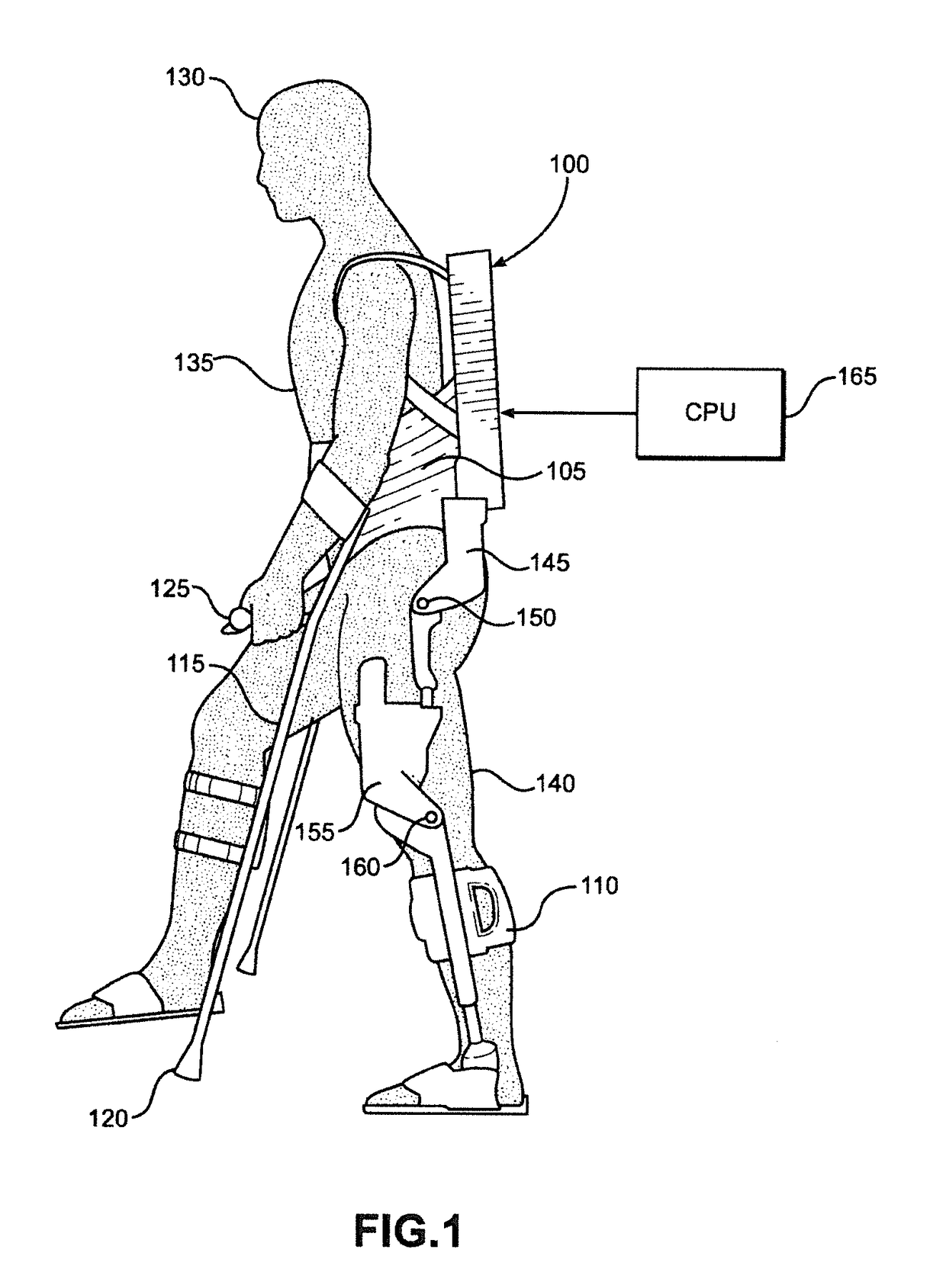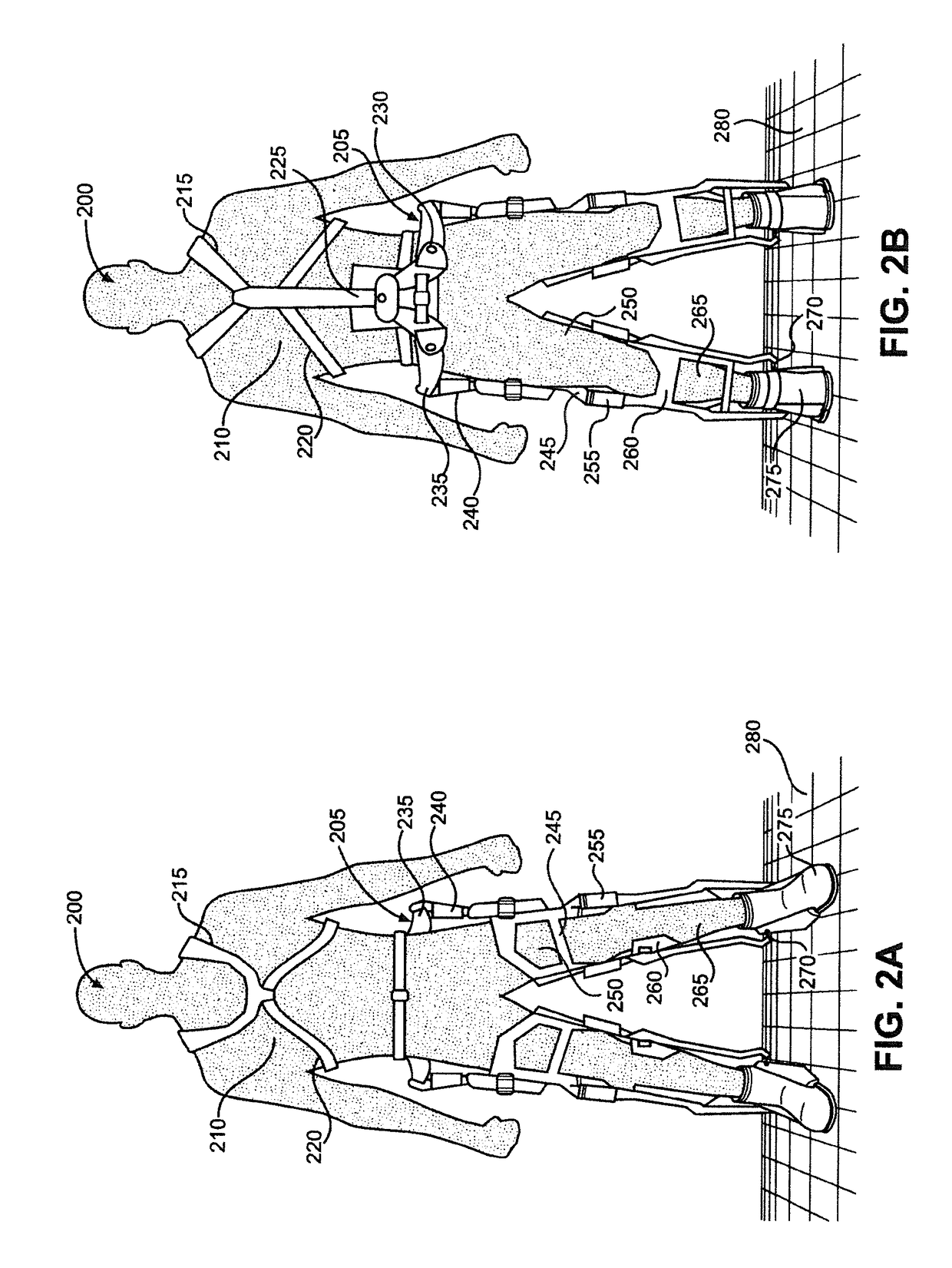Systems and Methods for Creating Custom-Fit Exoskeletons
a technology of exoskeleton and control interface, which is applied in the field of system and method for creating custom-fit exoskeletons, can solve the problems of complicated exoskeleton control interface, difficult to construct exoskeleton control interface, and complicating the proper fitting of an exoskeleton
- Summary
- Abstract
- Description
- Claims
- Application Information
AI Technical Summary
Benefits of technology
Problems solved by technology
Method used
Image
Examples
first embodiment
[0048]Turning to FIG. 3A, there is shown a flow chart illustrating a method in accordance with the present invention. At step 300, one or more 3D scans of a person are performed in which the surface contours of the person are measured. At step 305, the 3D scan data from step 300 is used to generate a 3D surface computer model of the person. At step 310, the 3D surface model of the person is used to generate a 3D exoskeleton components model that will optimally fit the 3D surface model of the person. At step 315, 3D printing is used to fabricate exoskeleton components based on the 3D exoskeleton model generated in step 310. At step 320, a technician or physical therapist assembles the 3D printed exoskeleton components into an exoskeleton. At step 325, a technician or physical therapist fits the assembled exoskeleton to the person measured in step 300, confirms proper fit and makes further adjustments as needed.
[0049]With reference to FIG. 3B, a 3D surface scan of a person in accordan...
second embodiment
[0054]Turning to FIG. 4A, there is shown a flow chart illustrating a method in accordance with the present invention. At step 400, one or more 3D scans of a person are performed for each of a plurality of poses. As a result, the surface contours of the person are measured in each of the poses. Since muscles and other tissues swell with contraction, the 3D surface of the person changes as the body of a person assumes the various poses. At step 405, the 3D scan data from step 400 is used to generate a 3D surface computer model of the person for each pose. At step 410, the 3D surface models of the person are compiled into a single, unified 3D surface model that takes into account the changing surface contours of the person in the various poses. At step 415, the unified 3D surface model is used to generate a 3D exoskeleton components model that will optimally fit the unified 3D surface model of the person. At step 420, 3D printing is used to fabricate exoskeleton components based on the...
third embodiment
[0059]Turning to FIG. 5A, there is shown a flow chart illustrating a method in accordance with the present invention. At step 500, one or more 3D surface scans of a person are performed with the person in one or more poses. At step 505, the 3D scan data from step 500 is used to generate one or more 3D surface computer models of the person. At step 510, one or more subsurface scans of the person are performed with the person in one or more poses. At step 515, the subsurface scan data from step 510 is used to create one or more subsurface models of the person. At step 520, the one or more 3D surface models and the one or more subsurface models are compiled into a single, unified model of the person that takes into account both surface and subsurface features of the person in the one or more poses. At step 525, the unified 3D model generated in step 520 is used to generate a 3D exoskeleton components model that will optimally fit the unified 3D model of the person. At step 530, 3D prin...
PUM
| Property | Measurement | Unit |
|---|---|---|
| Trajectory | aaaaa | aaaaa |
Abstract
Description
Claims
Application Information
 Login to View More
Login to View More - R&D Engineer
- R&D Manager
- IP Professional
- Industry Leading Data Capabilities
- Powerful AI technology
- Patent DNA Extraction
Browse by: Latest US Patents, China's latest patents, Technical Efficacy Thesaurus, Application Domain, Technology Topic, Popular Technical Reports.
© 2024 PatSnap. All rights reserved.Legal|Privacy policy|Modern Slavery Act Transparency Statement|Sitemap|About US| Contact US: help@patsnap.com










